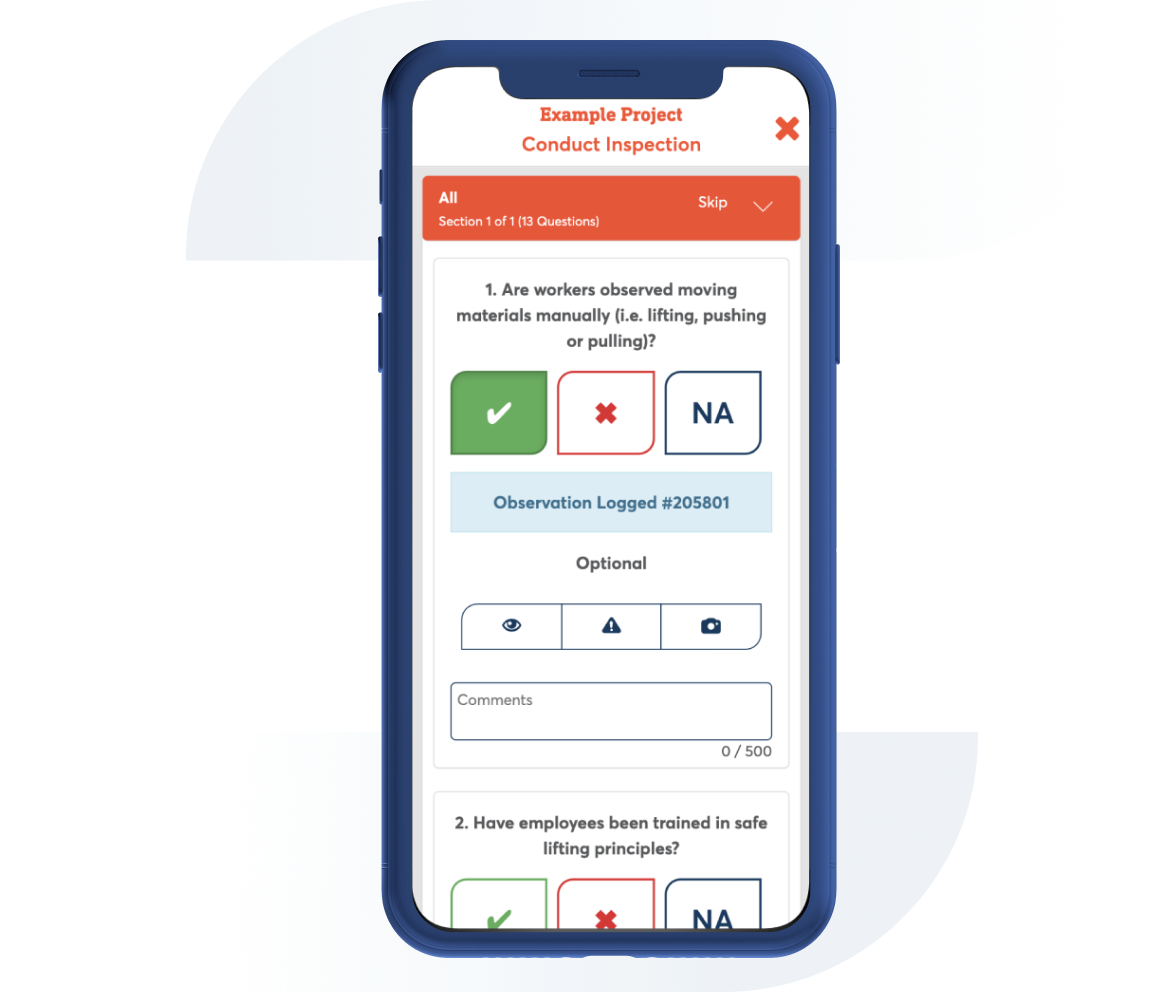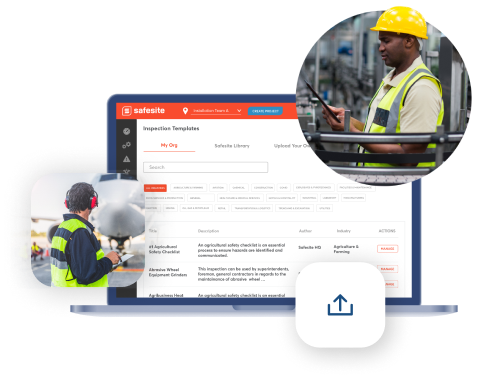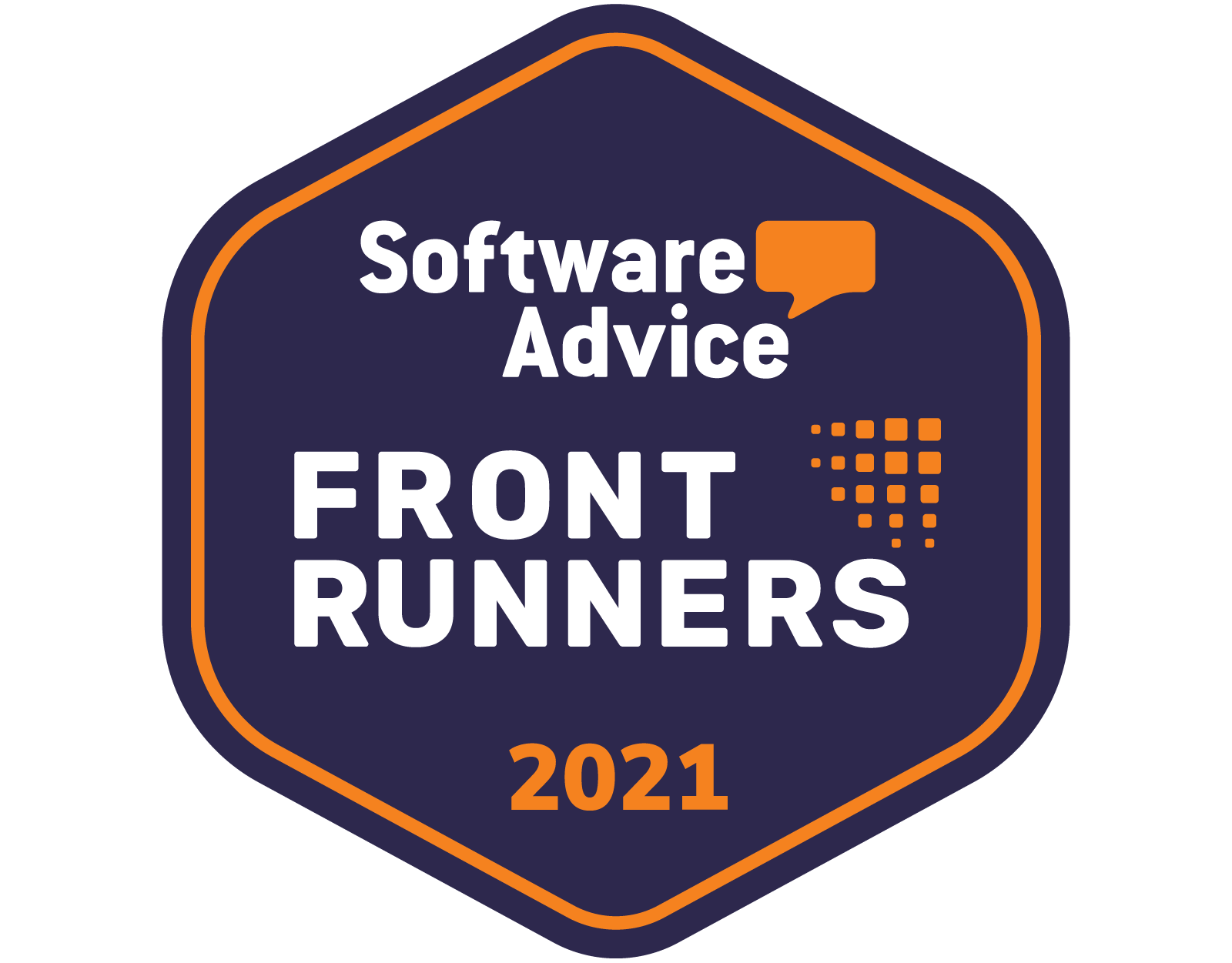Warehouse Forklift Safety Inspection
Contributor: Safesite Jurisdiction: OSHA
Use this checklist to ensure your company is following forklift safety regulations. Confirm that all operators are fully trained and using best driving practices and all safety and warning mechanisms are in place.

Template Preview
1. Powered industrial trucks (forklifts) meet the design and construction requirements established in American National Standard for Powered Industrial Trucks, Part II ANSI B56.1-1969.
Actions
2. Written approval from the truck manufacturer has been obtained for any modifications or additions that affect the capacity and safe operation of the vehicle.
Actions
3. Capacity, operation and maintenance instruction plates, tags or decals are changed to specify any modifications or additions to the vehicle.
Actions
4. Nameplates and markings are in place and maintained in a legible condition.
Actions
5. Forklifts that are used in hazardous locations are appropriately marked/approved for such use.
Actions
6. Battery charging is conducted only in designated areas.
Actions
7. Appropriate facilities are provided for flushing and neutralizing spilled electrolytes, for fire extinguishing, for protecting charging apparatus from damage by trucks and for adequate ventilation to disperse fumes from gassing batteries.
Actions
8. Conveyors, overhead hoists or equivalent materials handling equipment are provided for handling batteries.
Actions
9. Reinstalled batteries are properly positioned and secured.
Actions
10. Carboy tilters or siphons are used for handling electrolytes.
Actions
11. Forklifts are properly positioned and brakes applied before workers start to change or charge batteries.
Actions
12. Vent caps are properly functioning.
Actions
13. Precautions are taken to prevent smoking, open flames, sparks or electric arcs in battery charging areas and during storage/changing of propane fuel tanks.
Actions
14. Tools and other metallic objects are kept away from the top of uncovered batteries.
Actions
15. Concentrations of noxious gases and fumes are kept below acceptable levels.
Actions
16. Forklift operators are competent to operate a vehicle safely as demonstrated by successful completion of training and evaluation conducted and certified by persons with the knowledge, training and experience to train operators and evaluate their performance.
Actions
17. The training program content includes all truck-related topics, workplace-related topics and the requirements of 29 CFR 1910.178 for safe truck operation.
Actions
18. Refresher training and evaluation is conducted whenever an operator has been observed operating the vehicle in an unsafe manner or has been involved in an accident or a near-miss incident.
Actions
19. Refresher training and evaluation is conducted whenever an operator is assigned to drive a different type of truck or whenever a condition in the workplace changes in a manner that could affect safe operation of the truck.
Actions
20. Evaluations of each operator’s performance are conducted at least once every three years.
Actions
21. Load engaging means are fully lowered, with controls neutralized, power shut off and brakes set when a forklift is left unattended.
Actions
22. Operators maintain a safe distance from the edge of ramps or platforms while using forklifts on any elevated dock, platform or freight car.
Actions
23. There is sufficient headroom for the forklift and operator under overhead installations, lights, pipes, sprinkler systems, etc.
Actions
24. Overhead guards are provided in good condition to protect forklift operators from falling objects.
Actions
25. Operators observe all traffic regulations, including authorized plant speed limits.
Actions
26. Drivers are required to look in the direction of and keep a clear view of the path of travel.
Actions
27. Operators run their trucks at a speed that will permit the vehicle to stop in a safe manner.
Actions
28. Dock boards (bridge plates) are properly secured when loading or unloading from dock to truck.
Actions
29. Stunt driving and horseplay are prohibited.
Actions
30. All loads are stable, safely arranged and fit within the rated capacity of the truck.
Actions
31. Operators fill fuel tanks only when the engine is not running.
Actions
32. Replacement parts of trucks are equivalent in terms of safety with those used in the original design.
Actions
33. Trucks are examined for safety before being placed into service and unsafe or defective trucks are removed from service.
Actions
34. Additional Comments:

Can't find what you are looking for?
